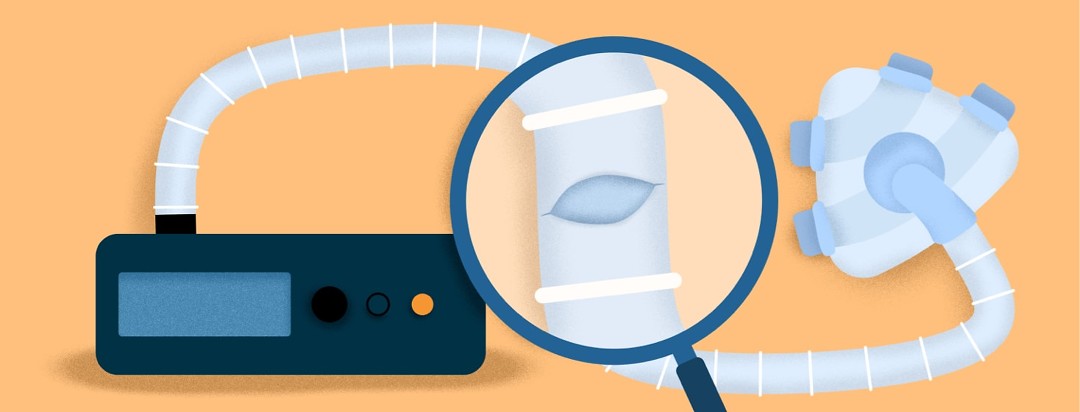How Do You Know When It's Time to Change Your CPAP Supplies?
For many, just using continuous positive airway pressure (CPAP) is a challenge. For others, the mask may fit, and the pressure may be good as Goldilocks (“just right”).
Still, in both cases, it may be hard to remember to replace headgear, cushions, tubing, and other CPAP components. This handy guide should answer any questions not already answered by your machine manual or CPAP provider. It covers:
- CPAP
- BiPAP (bilevel positive airway pressure)
- AutoPAP (adjusts to changes in breathing)
- ASV (adaptive servo-ventilation)
Replenishment schedule, at a glance
Even a well-cared-for CPAP machine and its components will wear out over time. Replacing and replenishment is part of your maintenance schedule.
These recommendations are general. You’re advised to confirm your CPAP supply coverage (amount of frequency) with your insurance payer, as well.
User’s manual
Don’t throw it away! It has important information you may need in the future! If you can’t find your manual, ask for a printed one directly from your CPAP provider. Also, most manufacturers put PDFs of their manuals online. You’ll need to search their sites by make and model to find the manual that matches your machine.
Cushion
This is the soft part that comes into contact with your face. Cushion manufacturers recommend you replace your:
- Cushion: 1 to 2 times monthly
- Entire mask setup (cushion, headgear, and chin support, if using): every 3 to 6 months
Headgear and chin supports
Replace headgear when it no longer holds your mask in place or the buckles, snaps, or Velcro no longer function. If you wear your mask properly, the headgear should hold its shape and resist stretching out. Overtightening your headgear not only stretches it out unnecessarily, but is also the reason for high mask leak, air blowing in the eyes, and painful red marks on the face. Replace chin supports when they no longer prevent oral or mouth breathing (usually due to overstretching).
Tubing
Replace anytime holes appear. You’ll notice them because you can hear hissing sounds or feel air coming out of the tubing. Leaks in the hose will affect your pressure delivery and may even leak moisture from the humidifier.
Filters
This really depends upon your home’s air quality. If you have pets, live with smokers, or experience higher-than-normal air pollution (smoke, smog, dust, even pollen), your filters may become dirtier sooner rather than later.
- Replace white paper or sponge filters at least monthly (or as soon as they begin to turn gray).
- If your machine has a gray filter, replace it every 6 months, or sooner if worn out.
Note: Not all machines have multiple filters. Check your machine’s manual or talk to your medical equipment provider to learn more.
Humidifier chamber
Usually quite robust, these water tanks are normally replaced every 6 months or as needed.
CPAP machine
Unless it’s not working properly, you should get at least 3 years of use from your CPAP machine if it’s maintained properly.
Tips for extending the lifespan of your CPAP supplies
Masks and headgear
- Wash your CPAP mask cushion daily with CPAP wipes or mild soap and water.
- Appliances that disinfect your mask and machine don’t remove dirt! They only remove microorganisms. Consult your manual for advice about using these appropriately so they don’t damage your equipment.
- Avoid using facial oils or moisturizers not approved for CPAP use. These can break down the cushions prematurely.
Humidifier chamber
- Daily cleaning of the reservoir prevents mineral deposits and the collection of bacteria. Wipe out with mild soap and water, rinse, and drain over a clean towel.
CPAP machine
- Always use distilled water in your CPAP. Tap water, filtered water, and water enriched with electrolytes can damage the components of your CPAP machine as well as introduce harmful microorganisms to your airway as you sleep.
- Keep all CPAP equipment away from direct sunlight to prevent damage.
- If your machine suddenly won’t work, don’t panic. First things first: check your power cord to ensure it’s plugged in. Follow manufacturer instructions to troubleshoot other problems.
Other CPAP machine maintenance “best practices”
Jot down the days when you replace any parts in a notebook stashed by your machine. Use this notebook as a guide for planning your next replenishment order.
I use my calendar app to remind myself to clean, replenish, or replace my supplies. Set recurring dates for each based on the recommendations here or the ones your CPAP provider or manufacturer give you. Then, tend to them as they pop up in your To-Do List.
Don’t delay in calling your medical equipment provider if your machine isn’t working properly. Often, they can provide you with a replacement as soon as overnight while taking your current machine in for repairs. They should also consult your insurance to determine your eligibility for a new machine.
Interested in reading more about getting the most out of your CPAP? Explore our featured collection of tips and tricks for CPAP users.

Join the conversation